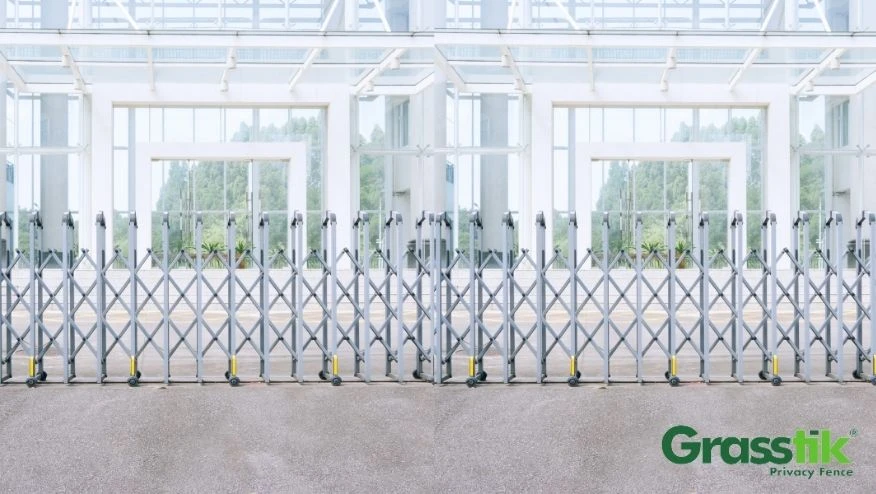
A barbed wire fence is often taken in many people's minds to be a huge farm and a secure perimeter. However, apart from its appealing and rustic nature, these fences provide a very viable solution to ensuring security of property, you can also use them as grass fences.
This is the all-in-one comprehensive guide that will ensure you know all about the barbed wire fences so that you can make an informed choice on your fencing needs.
We will break down:
- The features and real-life usability of usage of barbed wire fencing.
- The wide choice of materials and different types for you to pick from to suit your needs.
- Top Considerations Towards a Successful Barbed-Wire Fence Installation and Maintenance Plan.
What Is a Barbed Wire Fence?
Barbed wire fences go beyond their iconic role in the Western. They are actually rather practical and surprisingly versatile mechanisms for safeguarding property lines and keeping unwanted intruders off the premises. But, what are they, really?
Imagine a barbed-wire fence: sturdy metal wires twisted together with sharp points spaced at intervals to deter breaches. Its basic components are simple: high-tensile metal wires for strength and pointed barbs to discourage any attempts to breach it.
How to Make a Barbed Wire Fence?
Barb wire fences are for security boundaries. The first aspect to consider is observing safety, since the materials are harmful, and, when necessary, valid permits are required. So, sometimes, it is really better to hire a contractor.
But just for you to be curious, here's a preview of how the installation is done:
Get the required materials: metal posts, barbed wire with correct gauge, tensioner, pliers and safety material: gloves, eye protectors.
Measure and mark the fence line. Dig holes. Set and brace posts. Install barbed wire with tension. Begin from the first strand and unroll it along the line of the fence.
What Are the Common Uses of Barbed Wire Fences?
In effect, barbed wire fences are more than a mere rustic twang in pastoral landscapes; their bite is sharp and wonderful.
For keeping animals from straying, a barbed-wire fence acts as a durable livestock guardian and protects crops. Others include security; fencing barbed wire deters trespassers and provides a defensive perimeter in sensitive areas.
Much less often, barbed wire is in some residential areas for extra security. Besides these high-in-demand uses, one would find barbed wire fences securing government facilities or even as crowd control barriers at an event.
What Are the Different Types of Barbed Wire Fences?
Barb wire fencing is not just one type fence, as some might think, so let’s unravel the most common types.
Single Strand Barbed Wire Fence
Single-strand barbed wire contains a sharp barb protruding from a single line of wire and is used for discouraging animals and humans from crossing into a certain area.
Some of the most common incorporations of barbed wire include its use in agricultural fencing to contain livestock like cattle.
Due to the fact that barbed wire is constructed with only one wire, it is not designed to handle large structures.
Double Wire Barbed Wire Fence
Another name for the double barbed wire is the 4-point barbed wire, made by twisting two barbed wires onto a line wire that forms four-pointed ends. Having more pointed edges, double barb wires offer extra protection and deter trespassers.
Among other uses, barbed wire is used to construct cheap fences and is used in the fencing of pastures to keep cattle in or out. Each of these types is different and has a unique purpose to which it serves
What Are the Benefits of Using Barbed Wire Fence?
The barbed wire fences offer much more than just the rustic look. Look beyond the serrated top and discover other benefits attributed to them.
How Durable and Long-Lasting Are Barbed Wire Fences?
The endurance champion: the barbed wire fence. Most often galvanized to weather the elements, constructed of sturdy metal wires that have the capability of facing many years of the elements. Imagine them as very stoic sentinels against the wind, precipitation, and even rogue branches. Their very nature makes them durable and a good alternative in long-term fencing.
What Level of Security and Protection Do Barbed Wire Fences Provide?
The barbs themselves serve as a pretty major deterrent, discouraging both accidental and intentional breaches. Trespassers are likely to think twice before attempting to scale a fence ladened in these sharp deterrents.
Of course, barbed wire has an obvious advantage over other types of fencing. A wooden fence, regardless of a pretty look, gives in to the small pressure of a person determined for intrusion. For a chain-link fence, a person can climb over them with little persistence; barbed wire is essentially hostile and thereby gives a much greater obstacle.
Most basically, barbed wire fences are a security means, excellent for keeping off unwanted visitors and for property protection.
How to Install Barbed Wire Fence?
Barbed wire fences offer a great sense of security, but relevant tools and materials are required to do a good job. Some of the basics of what may be needed are outlined here:
What Tools and Materials Are Needed for Installation?
Strong Base: Metal posts (or wood in some cases) to serve as a backbone for the fence.
Sharp Security: Selected from the best range, barbed wire provides that deterrent.
Tension Tamers: A wire tensioner keeps the wire tight for optimal function.
Safety First: Use gloves and protective eyewear during work with barbed wire.
What Are the Steps Involved in Planning and Measuring Barbed Wire Fences?
Planning takes place before the barbed wire bite. Things to consider include:
- Knowing the Law. A working knowledge about local regulations revolving around the type, height, and boundary line for fences is crucial.
- Security Evaluation. Determine the level of security that will be needed for an appropriate style of fence design.
- Taking measurements. Accurate measurements ensure the fence line is straight and the barrier will function.
- Remember, safety first. Professional advice is highly recommended to install this safely, although it provides an overview for planning.
How Do You Place Barbed Wire Fence Posts?
The metal posts form the skeleton of your barbed wire fence. So, its placement is of prime importance. Here's a glimpse:
Digging Deep: Dig the holes to the appropriate depth so that the post gets firmly held.
Precise Positioning: Carefully position the posts to obtain a straight, secure fence line.
Fill in those holes with concrete or gravel to hold your fence with a barbed wire fast.
How Do You Install and Tension Barbed Wire Correctly?
Once the posts stand strong, the barbed wire itself takes center stage. Installation techniques do vary depending on the type of wire chosen and tensioning desired. It is proper tensioning that reflects the importance, however. Think of it as fine-tuning the effectiveness of the fence—just like the taut wire makes a more difficult pass.
This gives you an insight into the installation process, but to ascertain the security of your fence, consult experts in the field, for they have mastered all installations and tensioning of the wire to give a reliable security solution.
How Do You Maintain a Barbed Wire Fence?
Barbed wire fences are rugged, but even they need a little care now and then to keep them biting. Regularly inspect the fence for issues like loose wires, rust (especially with non-galvanized wire), or damaged posts that could lead to bigger problems if not promptly addressed.
Mechanical damage should be repaired with utmost dispatch. A fence with a hole in it gives a lot less protection than one without a hole. Seasonal factors need to be taken into account as well. Blowing snow or wind puts extra pressure on your fence. Periodic checks immediately following such occurrences keep your safety perimeter in shape to continue standing strong.
How to Provide Privacy with Barbed Wire Fences?
Barbed wire fences are great deterrents for would-be trespassers. But when it comes to privacy, it may not be in its favor. Here's why:
Limited Privacy: The use of barbed wire is not geared mainly towards privacy but actual security, which it provides. Though a barrier is created, it does not totally hinder looking through it. For an even more isolated piece of property, a grass fence roll or grass fence panels can be added behind barbed wire to give even more security and isolation.
Aesthetic Appeal: The industrial look of the barbed wire might not work for those who cherish a sense of privacy coupled with a touch of class. The climbing vines or strategically planted shrubs can take away from the visual impact of the barbed wire to give a more natural and integrated barrier.
Legal: Always consult your local government FIRST before changing your barb wire fence for privacy purposes. Local ordinances may place limits on barbed wire fence heights and features that can be added on.




